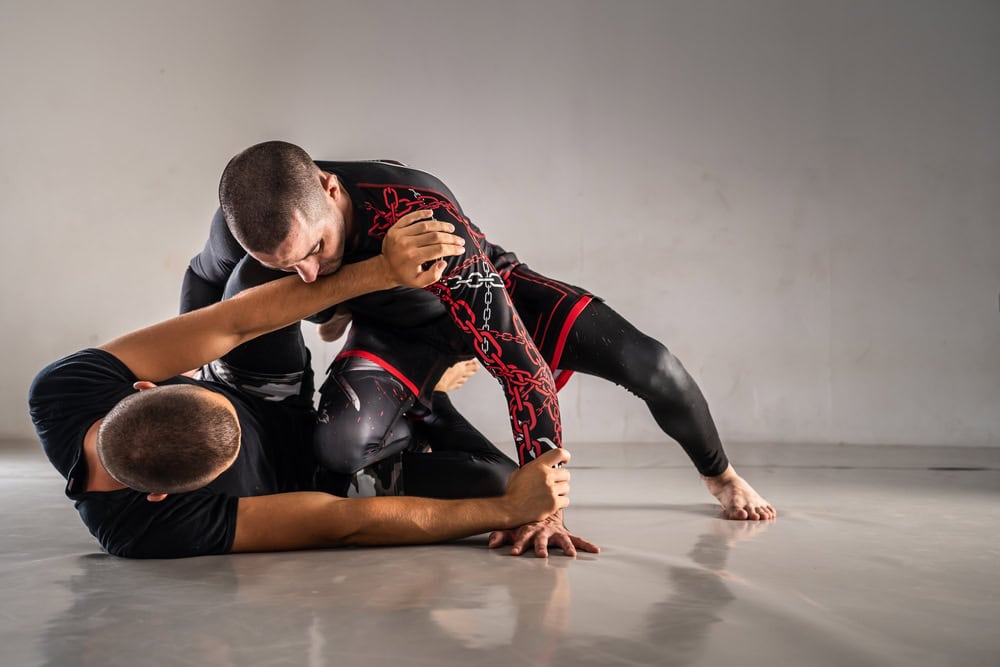As an Aikido practitioner and instructor with decades of experience spanning multiple disciplines, I'm often asked: "What is the best martial art for self-defense?" The answer isn't straightforward. Self-defense isn't just about techniques—it's about awareness, confidence, and effective response under pressure.
Different situations demand different approaches. Street confrontations differ dramatically from dealing with armed assailants or multiple attackers. No single martial art addresses every scenario perfectly, which is why understanding the strengths of various disciplines is crucial to making an informed choice.
In this guide, I'll walk you through the most effective martial arts for self-defense based on my experience and training across various disciplines—from my early days in Isshin Ryu Karate to my extensive Aikido training under masters like Shihan Yoshimitsu Yamada and Shihan Donovan Waite.
Importance of Learning Self-Defense
When I first began teaching Aikido, I noticed something remarkable about my students. Beyond the physical techniques, many experienced profound changes in how they carried themselves. Their posture straightened, their awareness sharpened, and a quiet confidence emerged that hadn't been there before.
Personal Safety in an Unpredictable World
Effective self-defense often prevents confrontations before they begin. According to the Center for Prevention of Violence Prevention and Self Defense Training, they explain that potential aggressors can identify vulnerable targets through body language alone. Learning martial arts changes how you carry yourself, making you appear less like a potential victim.
Mental and Emotional Benefits
Martial arts build mental resilience that serves practitioners in countless ways. The Journal of Physical Activity and Health published a study showing that martial arts practitioners demonstrated lower levels of stress hormones and better emotional regulation than non-practitioners.
Building Confidence Through Skill Development
My younger daughter experienced this transformation during her year of Brazilian Jiu-Jitsu training. Initially shy and hesitant, she gradually developed a quiet confidence that affected everything from her academic performance to her social interactions.
What Makes a Martial Art Good for Self-Defense?
Not all martial arts serve the same purpose. The criteria for effective self-defense are quite specific.
Effectiveness in Real-Life Scenarios
The most important quality is practicality in authentic situations. During my occasional training in Brazilian Jiu-Jitsu, I was struck by how techniques were pressure-tested against resisting opponents—something fundamentally different from the more choreographed practice in some traditional martial arts styles.
In a street fight, the ground is covered in concrete, tar, and dirt, not mats, and your opponent doesn't follow rules. This reality-based approach ensures that techniques work when it matters most.
Simplicity and Ease of Learning
Complex techniques often fail under pressure. When adrenaline is pumping, simplicity becomes essential. Boxing exemplifies this principle perfectly—basic stance, punches, and defensive movements can be learned quickly and applied effectively with limited training.
Self-defense expert Tony Blauer emphasizes this point in his approach: "The S.P.E.A.R. System is based on the body's natural flinch response. By converting the startle-flinch into a tactical counter, we leverage what the body wants to do naturally."
Adaptability to Various Threats
No two self-defense situations are identical, which means versatility is crucial. While teaching Aikido, which excels at dealing with certain types of attacks, I always made sure my students understood its limitations against other threats.
"The modern fighter must be adaptable to all ranges of combat— kicking, punching, clinching, and ground fighting. Each range presents unique challenges and opportunities."
Physical Fitness and Mental Resilience
Effective self-defense requires both physical conditioning and psychological preparedness. Beyond physical benefits, martial arts develop what psychologists call "stress inoculation"—exposure to controlled pressure that builds resilience for real-world challenges.
Best Martial Arts for Self Defence
Based on my experience and observations of what works most effectively in real-world situations, here are the martial arts I consider most valuable for practical self-defense.
Krav Maga -- The Ultimate Combat System
Krav Maga stands apart from traditional martial arts in its single-minded focus on real-world self-defense. Developed for the Israeli Defense Forces, it emphasizes neutralizing threats quickly and efficiently.
What makes Krav Maga particularly effective is its no-nonsense approach. During a seminar I attended, the instructor demonstrated how Krav Maga targets vulnerable areas without hesitation. The system is designed around instinctive movements that work with your body's natural responses to danger.
Training involves scenario-based drills that simulate real-world attacks, including multiple opponents and weapons defenses. Eyal Yanilov, former Chief Instructor of Krav Maga Global, explains: "The goal of Krav Maga is to teach you how to defend yourself in the shortest possible time frame with the most retention. It's a system designed so that 'average' people can benefit from the training, not just elite soldiers or martial artists."
Brazilian Jiu-Jitsu (BJJ) - Ground Fighting Mastery
When my daughters began training in Brazilian Jiu-Jitsu, I witnessed firsthand how this grappling art empowers even smaller practitioners to defend themselves effectively. BJJ's genius lies in its leverage-based approach that neutralizes size and strength advantages.
What makes BJJ particularly valuable is its focus on controlling an opponent. Rather than relying on striking power, practitioners learn to manage distance, establish dominant positions, and apply submissions if necessary.
Former UFC champion Demian Maia highlights this aspect: "In jiu-jitsu, you don't need to hurt your opponent to win. You can control them completely without causing damage. This is what makes it so effective for self-defense – you have options, from gentle control to more decisive submissions if necessary."
Muay Thai- The Art of Eight Limbs
Muay Thai earns its reputation through its comprehensive striking system using punches, kicks, elbows, and knees. What separates Muay Thai from other striking arts is its emphasis on close-range fighting. The clinch position provides critical skills for self-defense situations where distance is compromised.
The conditioning aspect cannot be overstated. Traditional Thai training methods build remarkable physical toughness through pad work, bag drilling, and sparring.
"Muay Thai is not just about techniques; it's about building a fighter's heart and body. When you train properly, you develop the confidence to face any challenge." This sentiment aligns closely with the teachings of Muay Thai Grandmaster Kru Yodtong Senanan.
Boxing -- Fast Hands and Footwork
Boxing focuses on a limited set of weapons—primarily the fists—but develops them to an exceptional degree. What makes boxing valuable is how quickly beginners can develop functional skills. Within a few months of dedicated training, practitioners can learn proper stance, basic punches, defensive head movement, and fundamental footwork.
The emphasis on mobility and defensive awareness translates directly to self-defense situations. Good boxers are difficult to hit cleanly, know how to manage distance, and can deliver powerful strikes while moving.
I believe that Boxing teaches you to stay calm under pressure. When someone's trying to hit you, you learn to think clearly instead of panicking.
Judo -- Using an Opponent's Strength Against Them
Judo shares philosophical roots with Aikido in its principle of using an attacker's energy against them. However, Judo's competitive element has refined its techniques to work against fully resisting opponents.
The throwing techniques can be devastatingly effective in self-defense situations. On a hard surface, being thrown with force can end a confrontation immediately. Beyond its standing techniques, Judo includes substantial groundwork (newaza) that complements its throwing system.
Kayla Harrison
"Judo saved my life. The sport gave me a goal, gave me something to wake up for. There is so much more to judo than just the sport. The Japanese say judo is a way of life, a way of living..."
Olympic Judo Gold Medalist /
Taekwondo -- Speed and Precision
While often criticized for its sport-oriented focus, traditional Taekwondo contains valuable elements for self-defense, particularly its dynamic kicking techniques. What makes Taekwondo kicks effective is their emphasis on generating power through rotation and momentum rather than just muscular strength.
Taekwondo grandmaster Jhoon Rhee emphasized this practical application: "Discipline is the habit of taking consistent action until one can perform with unconscious competence. Discipline weighs ounces, but regret weighs tons."
Karate -- Traditional Self-Defense
My martial arts journey began with Isshin Ryu Karate. The core striking techniques—straight punches, ridge-hand strikes, and low kicks—are designed for efficiency and effectiveness. When trained properly with impact on heavy bags or pads, these techniques develop considerable stopping power.
What particularly distinguishes traditional karate training is its emphasis on situational awareness and avoidance. The concept of "zanshin" (remaining mind) teaches practitioners to maintain awareness before, during, and after a potential confrontation—arguably the most important self-defense skill of all.
How to Choose the Right Martial Art for You
Finding the best martial art to learn is a deeply personal journey. What works brilliantly for one person might be completely unsuitable for another.
Your Goals (Self-defense, fitness, discipline, etc.)
If immediate self-defense capability is your primary concern, you might gravitate toward systems like Krav Maga or Boxing that provide functional skills relatively quickly. However, if you're seeking more comprehensive development including philosophical aspects, traditional arts like Karate or Aikido might better align with your goals.
BJJ coach John Danaher explains: "The beautiful thing about competition is that it doesn't lie. Either your techniques work against a resisting opponent, or they don't."
Your Body Type and Physical Condition
Different body types naturally gravitate toward different techniques and systems. If you're naturally strong and athletic, striking arts like Boxing or Muay Thai might allow you to capitalize on your physical gifts. Conversely, if you're smaller or less powerful, leverage-based systems like BJJ or Judo might be more suitable.
Practicality vs. Tradition
Most martial arts exist somewhere on a spectrum between pure tradition and pure practicality. Traditional systems often include formal elements that provide valuable cultural context and mental discipline but might not always translate directly to self-defense skills.
Training Availability in Your Area
Perhaps the most practical consideration is simply what quality training is available where you live. A good instructor can make even a less-known martial art tremendously effective, while poor instruction can render even the "best" system ineffective.
Combining Martial Arts for Well-Rounded Self-Defense
No single discipline provides a complete solution for all self-defense scenarios. While my foundation in Aikido offered excellent responses to certain types of attacks, I recognized gaps that other systems filled more effectively.
The most obvious and effective combination is pairing a strong striking art with a comprehensive grappling system. Boxing or Muay Thai provides the tools to manage distance and deliver powerful strikes, while BJJ or Judo offers solutions when a confrontation moves to close quarters or the ground.
When advising my students about cross-training, I emphasize the importance of mastering fundamentals before diversifying. As BJJ coach Rener Gracie puts it: "Learn to crawl before you try to run. Master the basics of one system before adding complexity from another."
Final Thoughts on Which Martial Art is Best for Self Defense
The question "what is the best martial art for self-defense?" doesn't have a single, universal answer. The journey through martial arts is deeply personal, shaped by individual needs, circumstances, and goals.
The most effective martial arts share certain qualities regardless of their specific techniques. They incorporate realistic pressure testing, emphasize simple and reliable movements, and develop both physical and mental resilience.
What's often overlooked is the importance of the instructor and training environment. I've seen traditionally effective martial arts taught poorly, and supposedly less practical arts made remarkably effective through quality instruction.
If I were to distill everything I've learned about self-defense into one piece of advice, it would be this: choose a martial art that you enjoy enough to practice consistently, taught by an instructor who emphasizes realistic application, in an environment that challenges you while keeping you safe. This combination—rather than any specific martial art—is the true foundation of effective self-defense.

Frequently Asked Questions
What is the best martial art style?
There isn't a single "best" martial art style—different systems excel in different aspects of self-defense. For quick effectiveness and real-world application, Krav Maga and Boxing offer relatively fast results. For comprehensive ground defense, Brazilian Jiu-Jitsu is unparalleled. The "best" style depends on your personal goals, physical attributes, and available training options.
Which martial art is unbeatable?
No martial art is truly unbeatable—each system has strengths and limitations. This became clear in the early UFC events, where practitioners from various disciplines competed against each other. The evolution of mixed martial arts demonstrates that well-rounded fighters who train in complementary disciplines typically have advantages over pure specialists.
What martial art is the most realistic?
Martial arts that incorporate pressure testing against resisting opponents tend to be the most realistic for self-defense purposes. Combat sports like Boxing, Muay Thai, Wrestling, and BJJ require practitioners to apply techniques against actively opposing training partners, creating a more authentic learning experience than choreographed drills. Krav Maga deserves special mention for its scenario-based training that simulates common attack situations, including weapons and multiple attackers.
Which martial art is easy to learn?
Some martial arts have a gentler learning curve and provide functional skills more quickly than others. Boxing stands out for its focused curriculum—with just a few basic punches and defensive movements, beginners can develop useful skills within months of consistent training. Krav Maga is designed specifically for quick acquisition of practical skills, with techniques built around natural movements and instinctive responses.




